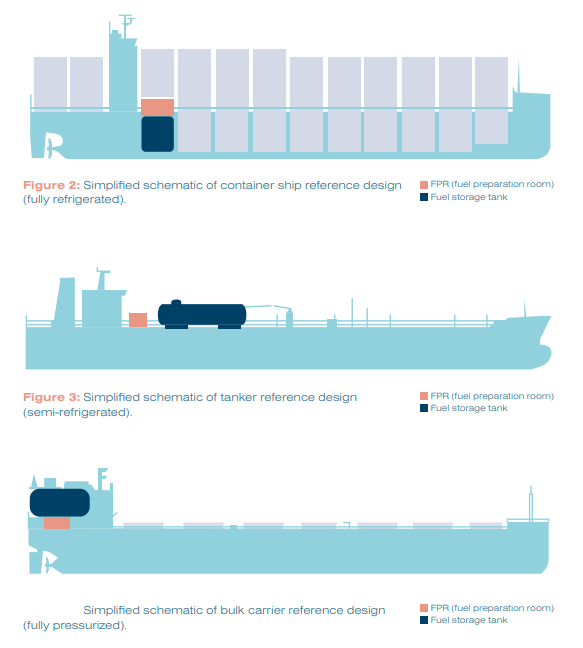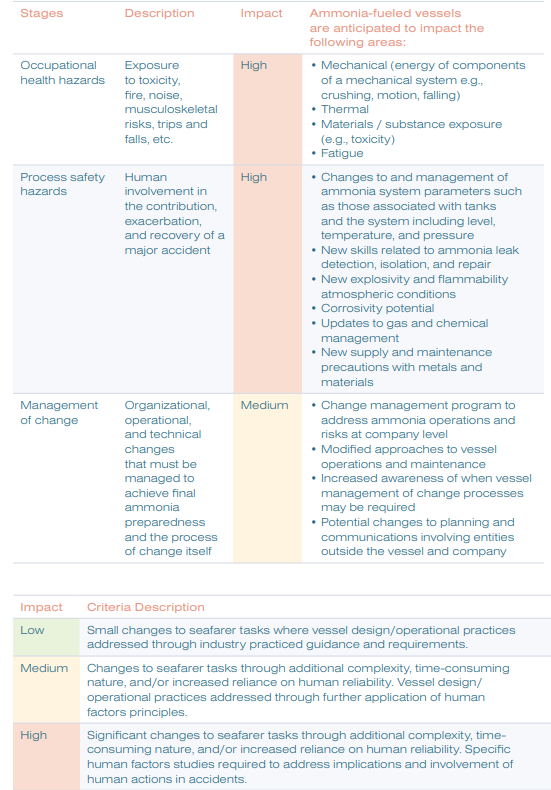A joint study into ammonia safety onboard ships undertaken by Lloyd’s Register (LR) Maritime Decarbonisation Hub and the Mærsk Mc-Kinney Møller Center for Zero Carbon Shipping, has found that a range of mitigation methods are required to keep toxicity risks to crew within published tolerable limits.
Using Quantitative Risk Assessment (QRA) analysis, a data-driven method that allows users to assess risk in a quantitative and granular manner, the joint study has been able to identify vessel design and operational measures that would reduce ammonia risks to a tolerable level.
Key findings:
- Secondary containment mechanisms, such as double-walled piping, used for ammonia-related equipment outside of already-restricted areas have been proven to significantly reduce risk.
- Ventilated gas-tight enclosures installed around any gas valve units in engine rooms also reduce risk.
- Ventilation of spaces containing ammonia equipment provides mitigation of toxic effects for many smaller, but not all, potential ammonia leaks. This mitigation is particularly efficient for smaller leaks. Consideration of additional precautions is required for personnel entering these spaces.
- Ventilation of spaces containing ammonia equipment reduces the risk of ammonia concentrations reaching a flammable level. Although ammonia is much less flammable than some other fuels, the flammability hazard should not be ignored.
- Ammonia leak alarms should be installed both in controlled areas (for example, the fuel preparation room) and near potential leak sources.
- The fuel system should be subject to rapid and reliable manual and automated shutdown in the event of an ammonia leak.

Human factor
To complement the QRA, the second section of this report summarizes insights from an analysis of human factors considerations that will be impacted by a transition to ammonia fuel use. These include:
- Competence and training needed to improve safety on ammonia-fuelled vessels
- Safe work practices and standard procedures that need to be implemented through systematic change management programmes
- Effective occupational health safeguards, such as personal protective equipment (PPE)
In the eagerness to transform, we must do so without compromising safety and reliability, by employing a strong risk-based change management approach.
… said Claus Winter Graugaard, Chief Technology Officer, Onboard Vessel Solutions, Mærsk Mc-Kinney Møller Center for Zero Carbon Shipping
Key recommendations:
- Lower storage temperature reduces the safety risk from ammonia fuel.
- Divide the fuel preparation room into two or more separate spaces containing different groups of equipment that could leak ammonia.
- Access to and length of time spent in spaces containing ammonia equipment should be minimized, monitored, and controlled.
- Ventilation outlets from spaces containing ammonia equipment should be placed in a safe location adequately separated from areas accessed by crew, in order to avoid accidental release of toxic concentrations of ammonia affecting personnel.
- Multiple sensors of different types to detect ammonia leaks should be installed.

Our approach to understanding and mitigating the risks of ammonia as a shipping fuel incorporates both a quantitative data-driven approach to ship design as well as a human factors approach to address crew safety.
… said Dr. Andy Franks, Senior Decarbonisation Risk Specialist, LR Maritime Decarbonisation Hub




























































